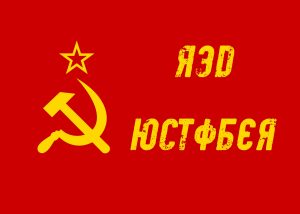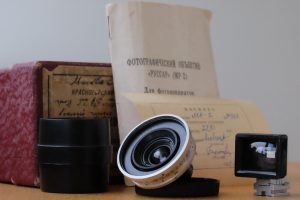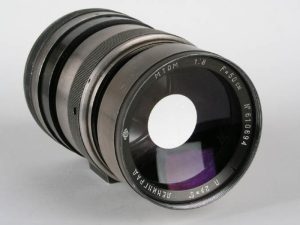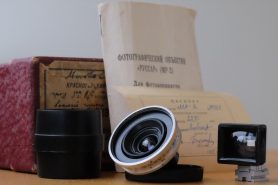 In the last couple of decades, Soviet era cameras and lenses have enjoyed a generally positive reputation, making lenses like the Jupiter-8 and Helios-44 sought after by people searching for cost-effective alternatives to German or Japanese models. Even the lower end Industars can be good options for people looking for acceptable image quality on an extreme budget.
In the last couple of decades, Soviet era cameras and lenses have enjoyed a generally positive reputation, making lenses like the Jupiter-8 and Helios-44 sought after by people searching for cost-effective alternatives to German or Japanese models. Even the lower end Industars can be good options for people looking for acceptable image quality on an extreme budget.
Today, we have a countless number of resources available to us from blogs like mine, web forums, social media groups, and (gasp!) even books that can tell you pretty much everything you’ve ever wanted to know about the various Soviet lenses. But of course, that wasn’t always so. During the thick of the “Cold War”, getting any kind of information in western countries about Soviet products was next to impossible. A combination of “Iron Curtain” restrictions on information, and a good amount of competitive embellishment made it difficult to get a straight answer on what was happening over there.

By the early 1960s, information had begun to trickle out, and magazines like Modern and Popular Photography started to feature articles about what our former allies were up to. This first article, written by Herbert Keppler in May 1962, is a rather comprehensive look at the Soviet lens industry at the time. For those with even a rudimentary understanding of the Russian language, the title of the article gives a pretty clear idea of Keppler’s opinion, but after reading it, it’s not quite as pessimistic as it could have been.
It’s worth mentioning that the typical 1960s American probably had a poor opinion of Soviet made goods and likely wouldn’t have had high hopes to begin with, but then again, in the early 1950s, most Americans had the same negative opinion of Japanese made goods, and look how that turned out.

The article suggests that the Russians have not been sitting idly by, twiddling their thumbs while everyone else uses German and Japanese lenses, and that the day could one day come where they would be able to compete on both a price, and quality level. Much of the information is vaguely credited to a “technical expert” named V. Vorobyev, but as to who this expert was, is anyone’s guess. It is perhaps this “expert” who maintains a sense of optimism about the Soviet lens industry throughout most of the article. Vorobyev credited the Soviets for the widest mass produced 35mm lens available (the 20mm f/5.6 Russar MR-2), lightweight mirror lenses (MTO-500 and 1000), and their insistence of sharing optical formulas between SLR and rangefinder cameras.
The last page of the article is one giant chart showing nearly all of the Soviet lenses available at the time, including some lens resolution tests in lines per mm done by the Russians. In the blue sidebar on the third page (page 74 in the original article) Keppler suggests that the Russian tests that generated these numbers actually are too low. He hypothesizes that whatever film was used to measure sharpness was not as finely detailed as what the Americans use. Still, he suggests that even if these numbers are low, they’re still lower than what the Germans and Japanese were capable of.
Overall, the article paints a picture of a Soviet lens industry that is playing catch up to the rest of the world. The mere fact that a 4 page article like this would appear in a major American photographic publication suggests that people were starting to keep an eye on the Soviets. They had clearly come a long way, and were headed in the right direction. It was not unreasonable to think that upon reading this article in 1962, American photographers might have predicted that within the next 10 years, cheap Soviet lenses would be common all over the world with performance rivaling Zeiss or Nikkor lenses.
As a bonus, here is one more lens article, this time from January 1964 about a 500mm Russian mirror lens. The article was written by Ken Heyman, a respected American photographer who had worked for a number of accredited publications, including LIFE magazine, but I could not find any evidence of which magazine this article actually appeared in. The font of the typeface is not consistent with Modern Photography, so I don’t think it was from there.

In any case, the article is short and strangely omits the name of the lens being tested, although an included image of the lens on the second page suggests it is the MTOM “Leningrad” lens, produced by OOMZ in Leningrad.
Unlike the earlier article that wavers between sarcasm and optimism, Ken Heyman was clearly impressed with the value and sharpness of this lens, saying that it took up less room in his camera bag than a 180mm Zeiss Sonnar and that it could focus down as close to 11 feet, compared to 50 feet of other mirror lenses he had tested before.
He had a few cons of course, but overall he seemed happy with it and concluded the article by saying he was glad to have it.
All scans used with permission by Marc Bergman, 2018.










I recall reading about Russian cameras and lenses on and off in Modern and Popular Photography magazines when Available Light photography was a big thing. (These were the days of Acufine Inc. film developers such as Diafine and Acufine, to crank Tri-X Pan into the “ISO 3200” range and the mysterious Kodak 2475 film.)
Over time, I read that Moscow carted off complete optical factories back to the USSR from East Germany after World War II and began to make/market “classic Zeiss lenses” in a variety of lens mounts, usually Leica SM and Praktica M42. Soviet cameras were of the “Leica and Contax copy” sort, along with the unique Zenit 35mm SLR.
About this time, I began looking at Shutterbug Ads, a nationwide “camera classifieds” newsprint-based magazine. I went there for the listings, and read articles by Ed Romney and Kalton C. Lahue about the “new-old” cameras and lenses from behind the Iron Curtain. Ed Romney waxed poetic about “micro-contrasts” found in Soviet “classic Zeiss” lenses absent from current Japanese lenses. Kalton C. Lahue wrote about “classic American cameras” that became the “Glass, Brass, and Chrome” book.
I mentally filed Rd Romney’s writing about Soviet lenses in the “to be verified” file and forgot about it until The Great Lens Bokeh Quest of modern times. When the Radionar triplet lens was mentioned, I recalled a snarky letters to the editor exchange over the “pedestrian/lauaghable Radionar” which raged in Modern Photography so many years ago.
These days, even projection lenses are touted as Bokehlicious Hipster finds for Mirrorless digital camera users.
Even the 400mm f/6.3 preset Spiratone lens has been dusted off to do “reach far out” portraits and candids.